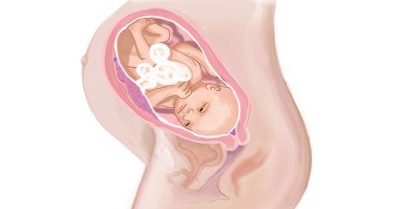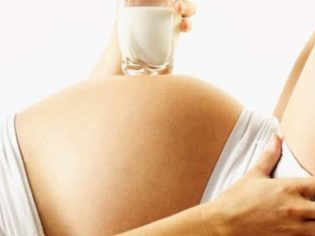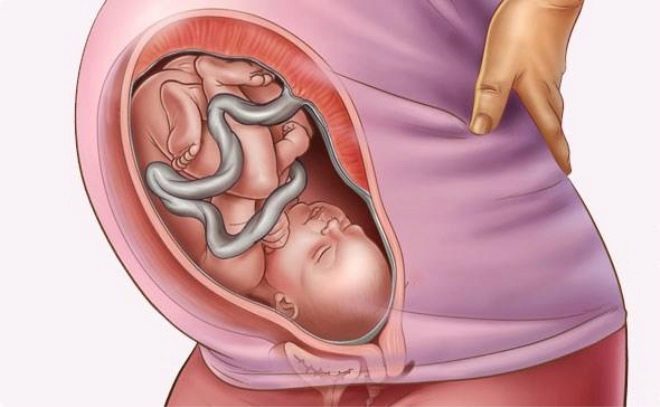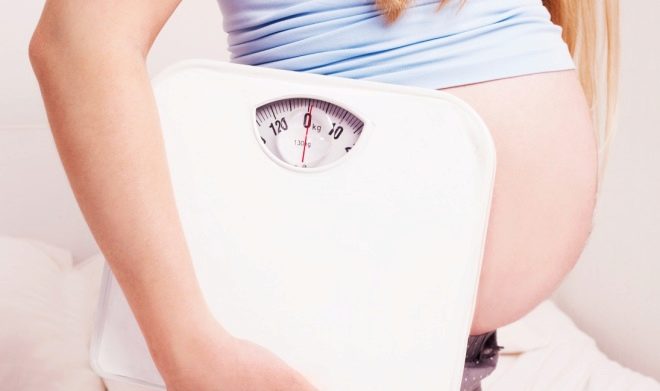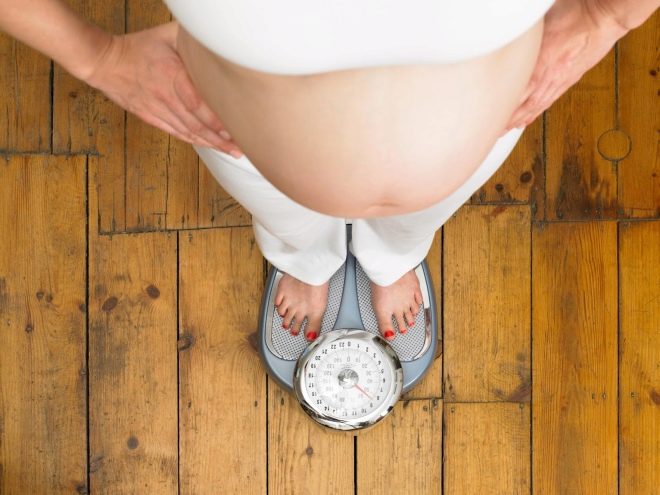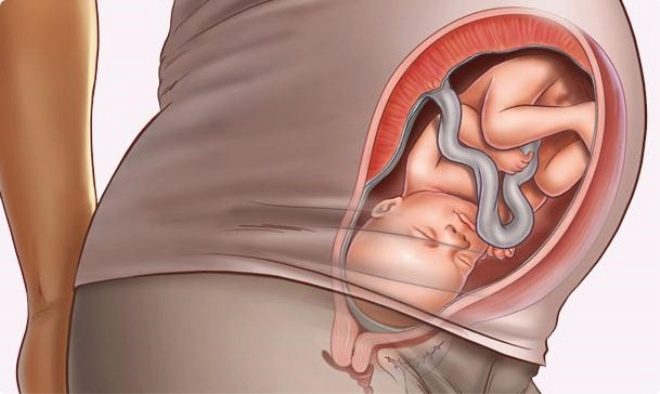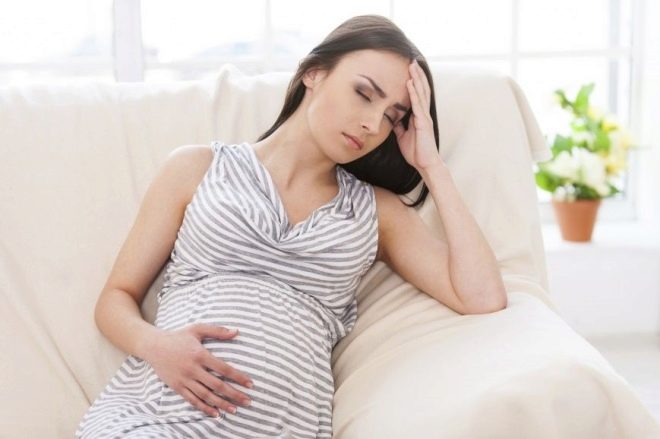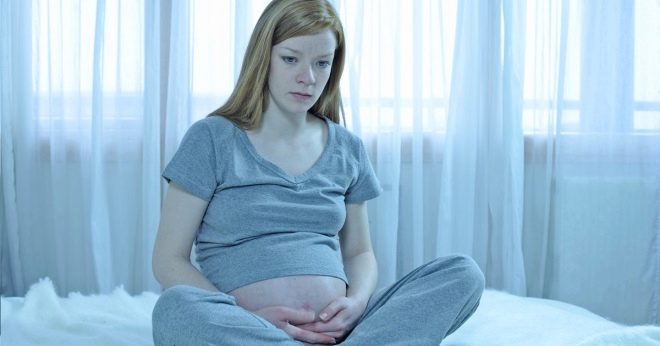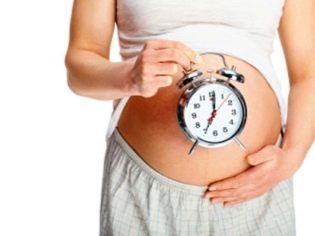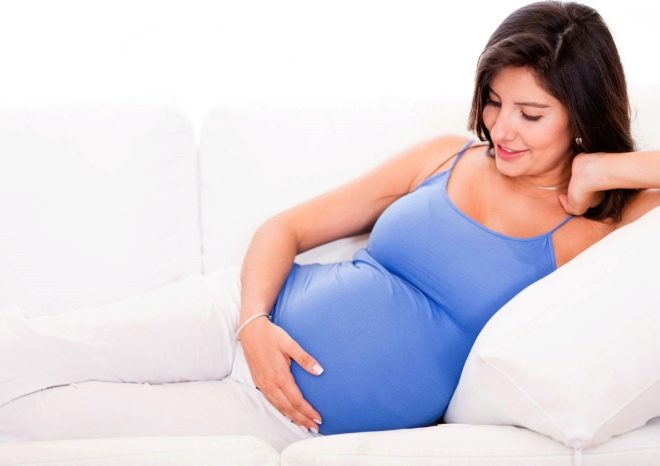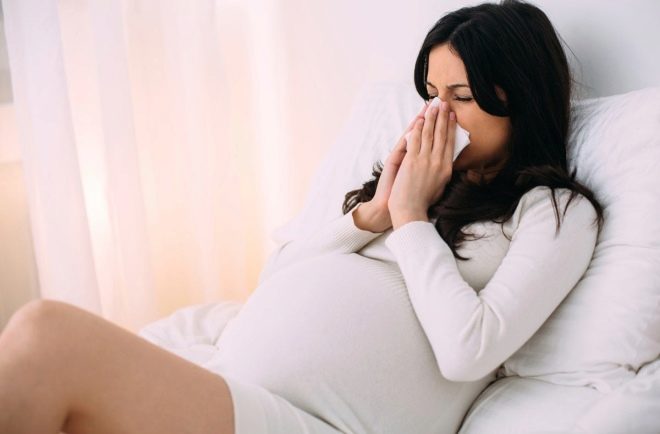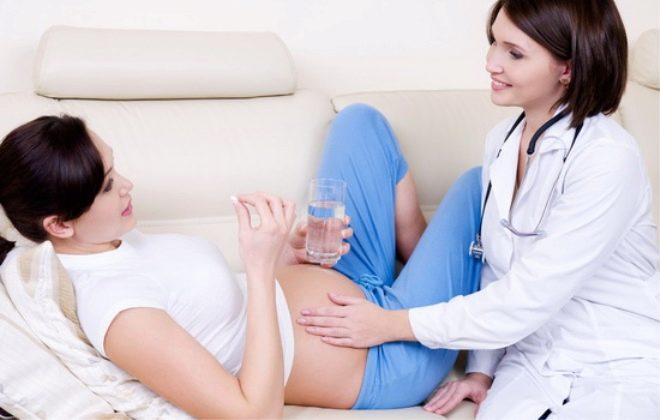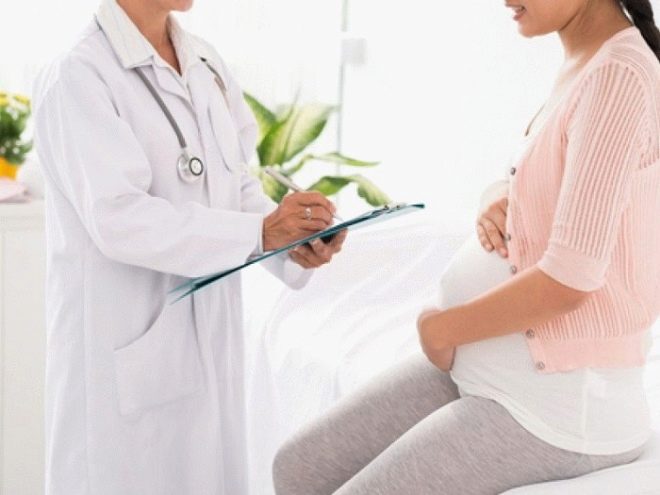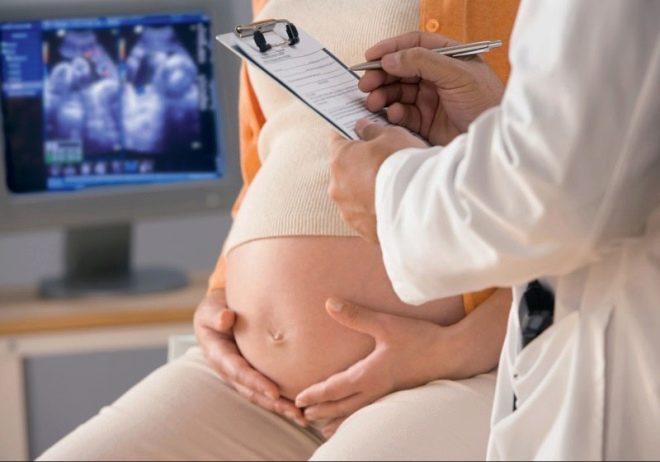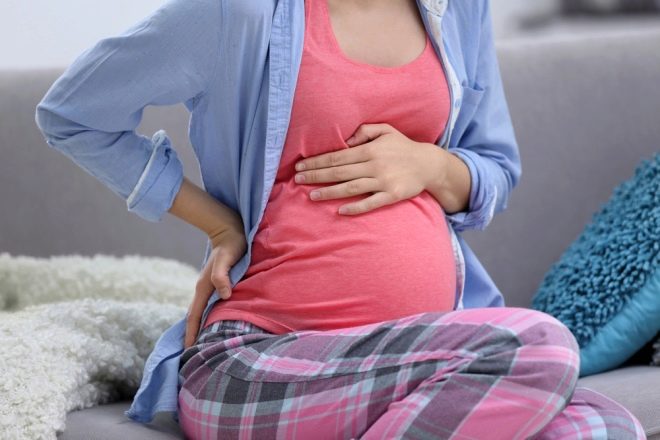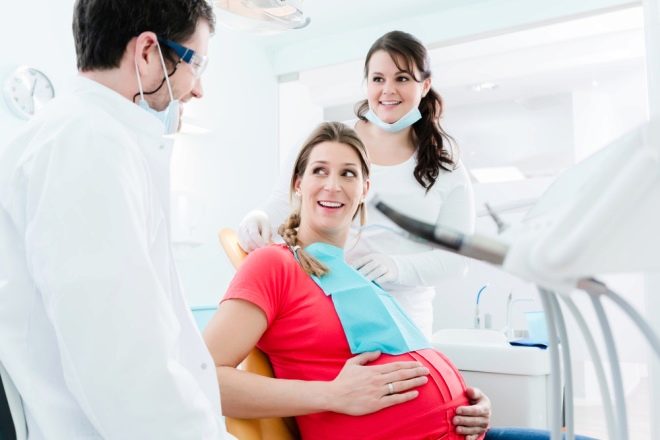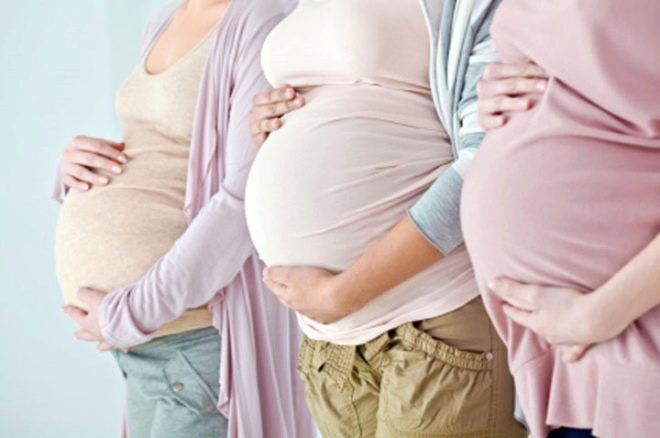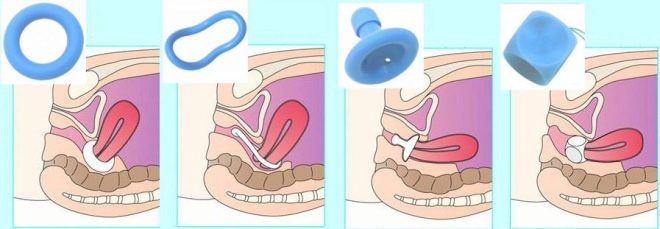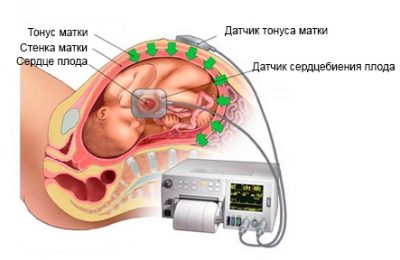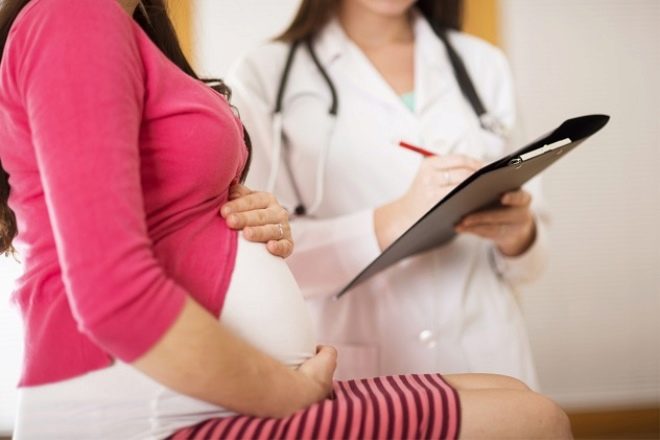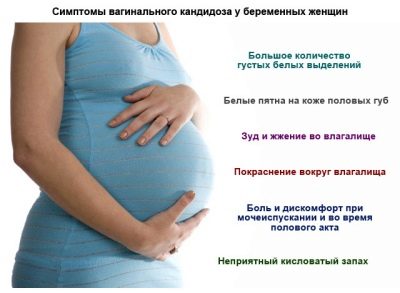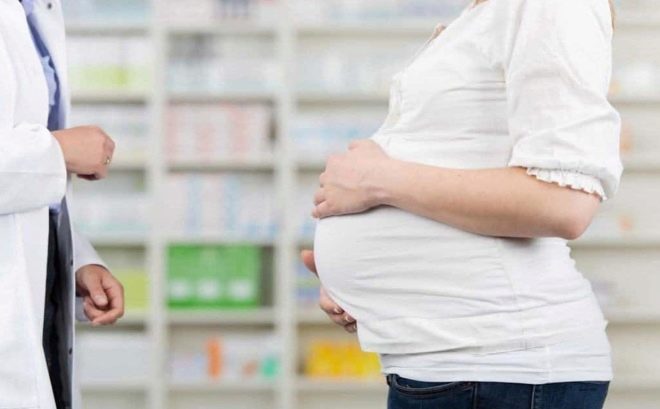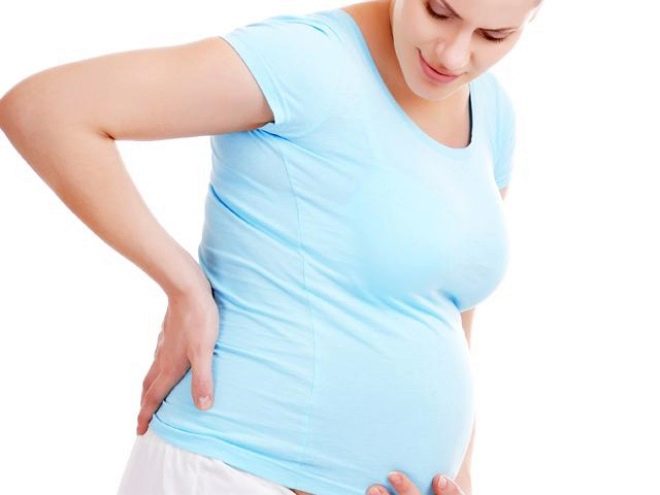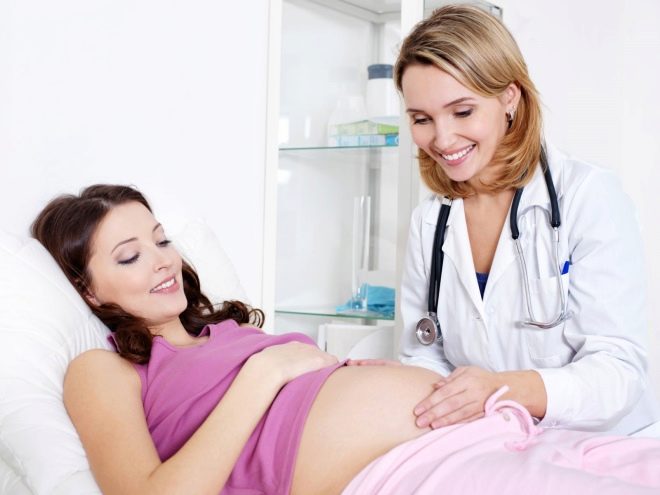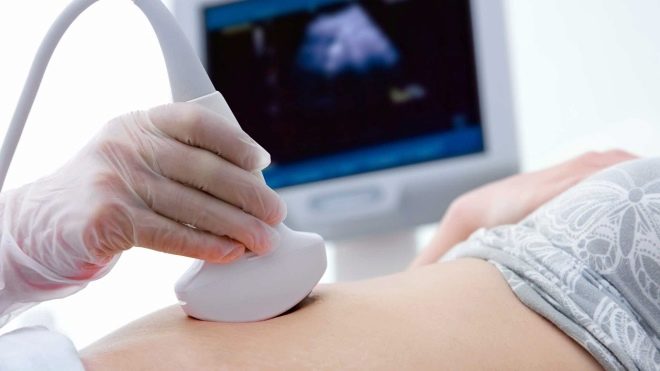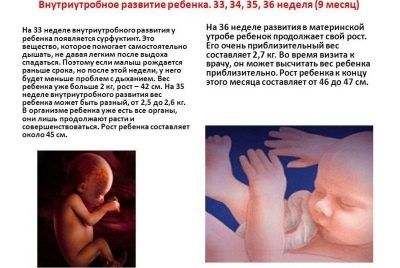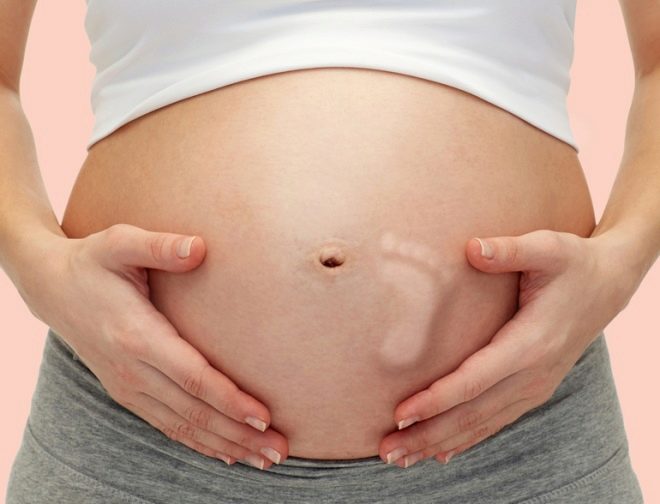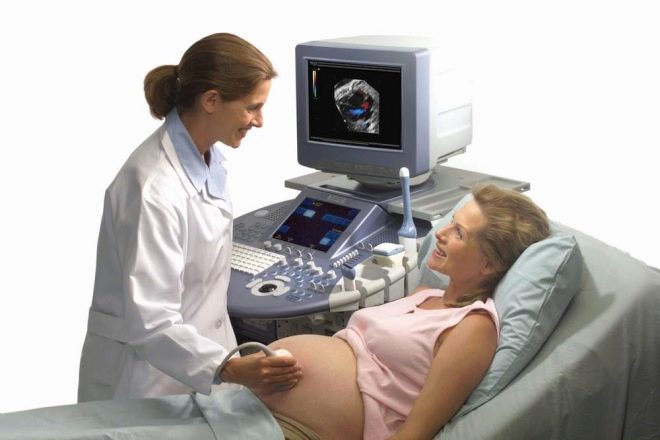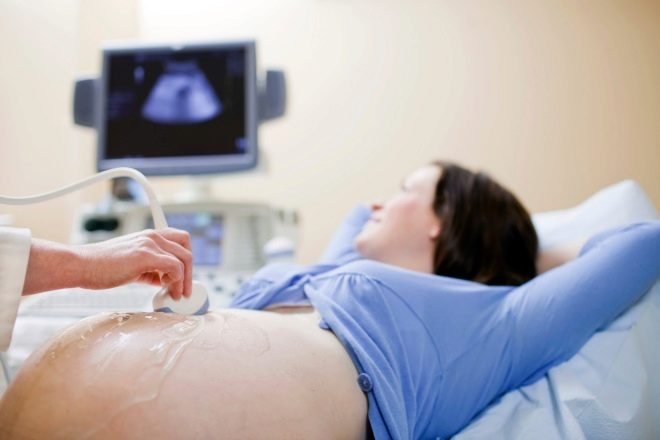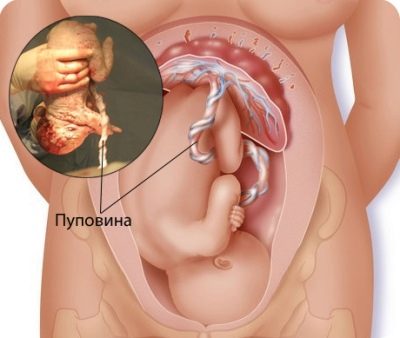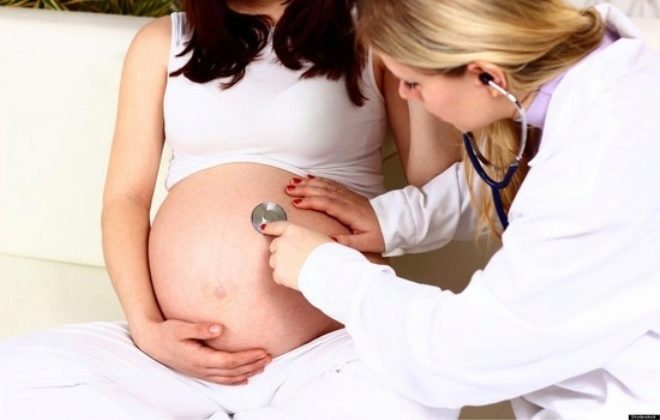34 week of pregnancy: what happens to the fetus and the expectant mother?
The final stage before childbirth is very important. At this time, interesting changes are taking place with mom and baby. Gradually, a woman is preparing for a new quality - motherhood.
How many months is it
34 week of pregnancy belongs to the third trimester. Obstetricians and gynecologists believe that this period is equal to the full the eighth obstetric month and two more weeks. Also, this period corresponds to the age of the fetus, equal to 32 weeks from conception.
The difference in the calculation of gestational age is due to a different measurement system. Doctors often use the term "obstetric month." In one such period, there are four obstetric weeks.
It is important to remember that the simple calendar method and obstetric are somewhat different from each other.
Mother features
Changes at 33-34 weeks of pregnancy occur in the maternal organism. Run their hormones. These biologically active substances are synthesized by the endocrine system. Changing hormonal levels is a necessary physiological reaction, which was invented by nature to prepare the female body for the upcoming birth.
Physiology
In the bloodstream of expectant mothers at this stage of pregnancy, fairly high concentrations of prolactin are detected. This hormonal substance affects the ligamentous and muscular apparatus of the pelvis. This leads to the fact that the muscles become more elastic. Such a feature is conceived by nature, so that during natural childbirth the risk of traumatic injury remains insignificant.
Increasing the level of prolactin in the female body also contributes to other changes. So, a woman has a chest pain. The mammary glands at the same time begin to swell and increase in size. Such a physiological preparation is necessary for the body to prepare for the next stage after the birth of a baby - lactation.
Increasing the concentration of prolactin in the blood also contributes to the fact that some women gradually begin to receive colostrumnecessary for feeding the baby at the very first time after his birth.
Gradually, the chemical composition of colostrum begins to change. This is necessary in order for the child to fully receive all the necessary nutritional components for its development. Initially, the colostrum is rather thick. Gradually, it becomes more liquid. The chemical composition of this nutritional product also changes.
Baby 34 weeks of pregnancy is very active.This leads to the fact that the expectant mother often feels the various tremors that arise during his movement.
If the baby is quite large, the uterus rises strongly. This contributes to a slight squeezing of the diaphragm. This condition leads to the fact that the future mother changes her breath - it becomes difficult to breathe.
Some women may experience shortness of breath. Usually, it manifests itself even when doing regular housework.
In order for breathing to remain normal, doctors recommend expectant mothers to limit intensive physical exercises during this period of pregnancy.
An important assessment of the condition of the future mother and baby is the determination of the woman’s monthly body weight gain. A doctor conducts such a simple study to a pregnant woman regularly. This informative method of examination allows the doctor to determine the general condition of the body of the future mother. Also using this clinical technique, the doctor can indirectly assess the intensity of fetal development.
Doctors believe that Watch for weight gain should be sure all expectant mothers. All obtained values fit into medical records. This allows professionals to assess the dynamics of the course of pregnancy. It is important to note that the average increase in different periods of pregnancy is different. This is largely due to the pace of fetal development and functional changes in the female body.
Indicators of overall weight gain in different women may be different. A huge number of factors affect the rate of weight gain during pregnancy. By this time, an increase in the body mass of a woman occurs at 9-13 kilograms.
Expectant mothers should remember that this clinical indicator is averaged. Reviews of many women indicate that their weight gains were very diverse. Someone is gaining 7 kilograms, and someone and all 20.
At the same time, a comprehensive assessment of the future mother's well-being and the intensity of her baby’s development is much more important. For this, doctors use various research methods.
Sensations
By this time of pregnancy, the expectant mother in the body there are numerous changes. At this stage of intrauterine development, the baby is already quite well developed.
As a rule, by this time of pregnancy there is a strong physiological and emotional connection between the mother and the baby. The development of the baby in my mother's tummy leads to the fact that the woman feels a whole range of different sensations.
Changes in mood and behavior
Changes in the hormonal background contribute to the appearance of daytime sleepiness in many pregnant women. The need for such a vacation, as a rule, is increasing every day. Many women who became mothers note that their daytime sleepiness increased significantly closer to childbirth.
At night, however, the opposite situation occurs quite often - difficulty falling asleep. A woman may develop insomnia. Most often, this adverse symptom develops in quite anxious and exciting women.
Another symptom that may occur in the expectant mother at this stage of pregnancy is mood swings. These specific changes also result in changing hormones. This protective reaction from the nervous system is the result of its preparation for the upcoming labor.
This is manifested most often by the fact that a woman can “break down” over trifles. The expectant mother increases anxiety. A woman can strongly emphasize daily events that are not of great importance. The development of such symptoms is also quite strongly influenced by the personal characteristics of the psyche, temperament and temper.
The development of an alternative situation is possible - a decrease in the intensity of emotions. This is manifested by the development of apathy in the future mother, which is seen in women from the outside.A rather active woman at this stage of pregnancy can become more silent, limit social contacts.
Such a reaction of the psyche is compensatory. The female body thus limits all external events, as if protecting the baby from stressful influences.
The changing hormonal background contributes to the fact that changes in behavior and mood are, as a rule, temporary. After the birth of the baby, the state of mind changes. If the expectant mother is experiencing significant difficulties in their behavior and mental state, then it is better for her to consult a psychologist.
By this time of pregnancy, the expectant mother begins to cope much worse with various psycho-emotional influences. Many women note that it becomes difficult for them to endure stress.
Stress effects negatively affect the tone of blood vessels. Also during stress, special hormones enter the blood. All these changes have a negative effect not only on the general condition of the woman, but also on her baby.
At this stage of pregnancy, the mental activity of the cerebral cortex is mainly aimed at preparing for previous births. This contributes to the fact that a woman becomes much more difficult to perceive a large amount of information.
At this time, memory loss and distraction of attention may also develop. Many women may experience problems with multitasking. This leads to the fact that they try to perform all actions consistently. So it is much easier for them to track the result.
Too intense mental activity can lead to rapid fatigue. This leads to the fact that a woman gets tired much faster. The future mom may feel that she has a headache. To restore mental strength, she needs more frequent rest periods.
Also, intense mental activity can contribute to a moderate spasm of the blood vessels. This leads to the fact that the oxygen in the blood enters somewhat less.
In this case, the woman may feel that she is dizzy. The severity of this adverse symptom is much less pronounced in a horizontal position. Excellent prevention of various vertigo is to control the regime of the day and rest. Excessive strain at this stage of pregnancy for the future mother and her baby is dangerous.
Body sensations
Some women at 34-35 weeks of pregnancy have lower back pain. This symptom is much brighter in pregnant women, carrying twins or triplets.
Pulls the lower back much stronger after committing physical exertion. Some women also appear soreness in other parts of the back. The future mother may also feel that she has pain in the bones between her legs.
Many women at this stage of pregnancy appear swelling. So a rather dangerous pathology can manifest itself - preeclampsia. In addition to edema, arterial hypertension may also develop with this disease and protein may appear in the urinary sediment.
Edema can occur on the body of a future woman not only due to pathological changes. Some women also note that they only developed these symptoms for the first time during pregnancy.
The appearance of puffiness is due to the fact that the enlarged uterus squeezes the organs nearby. Strong pressure is also exerted on the kidneys and ureters. This contributes to the fact that the excretion of urine is somewhat worse. In the end, this leads to the appearance of a strong puffiness.
Edema develops in various parts of the body, but most often on the legs and face. In future mothers suffering from severe edema, even the appearance changes and the contours of the face change. This leads to the fact that it becomes more rounded and swollen.
Swelling that appears on the face leads to swelling of the eyelids.This gives the facial expression a more sullen and sad look. When pressing on the swollen skin, fingerprints remain on it. The swelling is most pronounced, usually in the morning.
The enlarged uterus puts a lot of pressure on neighboring organs. As a rule, this is manifested by the fact that the expectant mother begins to run to the toilet more often. The urge to urinate increases closer to childbirth.
So, to this period of pregnancy, expectant mothers may begin to show contractions. They are not the forerunners of a speedy birth. Doctors call such contractions training.
You can identify them using cardiotocography. To do this, special sensors are superimposed on the belly of the future mother. With this study, you can determine the amplitude and frequency of any contractions, including false ones. They appear due to increased contractions of the uterine wall.
Some women do not feel any significant changes in their condition during training fights. Others feel a certain discomfort in the stomach. Severe pain in this state does not develop.
What can bother a pregnant at this time?
Even with a healthy pregnancy, the expectant mother has a variety of symptoms. The specific changes that occur at this time in the female body lead to their development.
If a woman has any diseases of internal organs, her general condition may be worse. It often happens that during this period of pregnancy many diseases are exacerbated.
Propensity for colds
The work of the immune system during pregnancy varies. This is largely due to the fact that in the female body appears "new biological" object, which has its own genetic set. Reduced immunity is necessary. This contributes to the fact that the mother's body does not reject the baby.
The altered work of the immune system leads to the fact that expectant mother becomes susceptible to many infectious diseases. Various pathogenic viruses and bacteria can lead to their development.
The course of pathologies may be different. This largely depends on the initial state of the woman and the presence of aggravating chronic diseases of internal organs.
The risk of a cold at this stage of pregnancy is also quite high. With catarrhal pathologies, quite a lot of different symptoms develop, severely disturbing the future mother's well-being.
So, a woman may have nasal congestion, as well as difficulty breathing. Cold rhinitis (runny nose) is also accompanied by the appearance of nasal discharge. The inflammatory process can also begin in the oropharynx. In this case, the woman experiences pain when swallowing. Zev becomes red, may decrease appetite.
The appearance of herpes on the lips is a common pathology that occurs at this stage of pregnancy. Its development also contributes to the weakening of immunity. It also happens that the herpetic bubbles on the lips appear even after the banal supercooling with the wind.
Herpes manifests itself in different ways. In some women, herpes infection is difficult.
With the appearance of herpetic eruptions, the expectant mother should always see his doctor. As a rule, local remedies are used to eliminate adverse symptoms.
Disorders in the organs of the gastrointestinal tract
To this period of pregnancy changes occur in the functioning of the digestive system. This leads to the fact that the woman begins to experience uncomfortable symptoms. Such sensations can even appear in expectant mothers who have never suffered from digestive diseases.
One of the possible changes characteristic of a given gestational age is an increase in the acidity of the gastric juice. This can lead to a woman having heartburn.Errors in the diet may also lead to an increase in this adverse symptom.
Too high acidity of gastric juice also contributes to the appearance of discomfort and even pain in the stomach. As a rule, the maximum of these manifestations occurs in the first hours after eating food.
Changes in the gastrointestinal tract can also be manifested by various disorders of the stool. Many women complain to their doctors at this time that they have constipation.
The development of this symptom contribute to impaired motor function of the intestine. Such changes lead to the fact that future mother’s chair may be irregular. Some women may even experience soreness in the rectum during bowel movements.
Tolerate such symptoms should not be. It is very important when they appear immediately to consult a doctor. The doctor will make a set of recommendations and, if necessary, recommend safe laxatives.
In some cases, to normalize the function of the intestine is only enough correction of eating behavior. Inclusion in the daily diet of fruits and vegetables rich in fiber, will contribute to a regular chair. Also, the future mother should not forget about the drinking regime. Inadequate fluid intake also contributes to regular stool difficulties.
Difficulties with defecation may also be complicated by the development of hemorrhoids.. This condition, unfortunately, is recorded in many women during pregnancy. Most adversely, if the hemorrhoids in the rectum begin to bleed.
The occurrence of hemorrhoids is an important reason for an emergency visit to the doctor. The danger of pathology is that bleeding hemorrhoids can lead to anemization of a woman. Anemia is also dangerous for the development of the baby.
To improve well-being, rectal suppositories may be required. Appointed such funds by a doctor. It is important to remember that when they are appointed, the potential risk from their use is necessarily evaluated.
The disruption of the chair may be different. In this case, the future mother may have diarrhea. If it is accompanied by fever, abdominal pain, and vomiting, this may be due to an intestinal infection or food poisoning. In this situation, seek medical help as soon as possible. This condition is dangerous for both women and their babies.
At this stage of pregnancy, all organs of the gastrointestinal tract begin to work much more intensively. This causes their functions to change.
The secretory activity of many organs also increases. This leads to the fact that the blood concentrations of various enzymes increase. So, intensive work of the liver can lead to the fact that in the bloodstream there will be a fairly high level of liver enzymes - AST and ALT.
If the expectant mother likes to eat fatty and fried foods, then she, as a rule, develops problems in the gallbladder.
In women who have had chronic cholecystitis before pregnancy, the abuse of junk food can lead to an exacerbation of the disease.
This condition is manifested by soreness on the right under the ribs after eating. There may also be problems with the chair. Some women have itchy skin.
To normalize well-being, the doctor will definitely recommend to follow a diet. In some cases, the need for choleretic drugs. It is usually prescribed by the therapist. If the future mother has chronic diseases of the gastrointestinal tract organs, then she can also consult a gastroenterologist for advice.
Dental problems
At this stage of pregnancy, future mothers often have various pathologies in the oral cavity. This is also preceded by changing hormones. One of the adverse symptoms is bleeding gums.This clinical sign may be a manifestation of periodontal disease.
Reduce bleeding gums can special mouthwash and gentle toothpastes. You can use products that contain extracts of medicinal plants. Also, to strengthen the gums, you can do and rinse with decoctions of the flowers of the pharmaceutical chamomile or sage. Make such broths can be easily at home.
When using herbs, it is very important to remember about the possibility of allergic reactions, especially if a woman has a tendency to develop allergies.
If there are problems in the oral cavity, the expectant mother should immediately consult a dentist for advice. Pull with this consultation, if a woman has a toothache, you should not. Many future mothers are very worried about how they will be treated with dental treatment. Nervous about this is not worth it.
Currently, many dental products are safe to use during pregnancy. It is better for a future mother to treat her teeth with a specialist who has experience working with pregnant women.
Disturbances in the reproductive organs
The state of the reproductive organs of the future mother is very important to assess at all stages of pregnancy. Such dynamics allows doctors to identify dangerous conditions and emerging pathologies in a timely manner.
Cervical insufficiency
There are many different pathologies associated with shortening the cervix. Too short cervix can lead to difficulties with the natural birth of a child. Also, this condition can lead to premature birth.
The shortening of the cervix can lead to the development of a rather dangerous pathology - isthmic-cervical insufficiency. She is dangerous because The risk of premature birth is very high.
Treatment of cervical insufficiency may be different. Tactic therapy is made individually. For this, the initial state of the woman and the peculiarities of the development of the fetus are necessarily evaluated.
One of the methods of therapy is prescription of hormonal drugs. These funds have an effect on the cervix.
For hormone therapy can be used different drugs. One of them is "Utrozhestan." This drug is prescribed by an obstetrician-gynecologist who observes a woman during her pregnancy. Utrozhestan cancellation is carried out with mandatory control of the state of the reproductive organs.
For the purpose of treatment of isthmic-cervical insufficiency, another method can also be chosen - the use of special obstetric devices. They are called pessaries. These funds are necessary in order to reduce the risk of preterm birth.
There are certain medical indications for installing a pessary. This obstetric device will be in the woman's vagina long enough for the baby to be in the uterus the time necessary for its development.
Other parameters are also used to assess the condition of a woman’s doctor. One of them is the tone of the uterus. It is an important criterion for the state of the reproductive organs of the expectant mother.
Excessive toning can be dangerous for the development of many pathologies for the baby.
Specific secretions from the genital tract
In this period of pregnancy, the future mother is also very important to monitor vaginal discharge. The norm is light discharge, not having any sour or unpleasant odor. Mucous discharge can also be quite physiological.
The appearance of vaginal secretions of red or crimson color should guard the future mother. This symptom can be extremely unfavorable and indicate a variety of pathologies associated with the placenta. For example, in this way its detachment may manifest.
When a bloody discharge from the vagina, a pregnant woman should immediately consult a doctor.The doctor will conduct a clinical examination and examine the internal genital organs with medical instruments.
If you suspect the development of pathologies, he will also direct the future mother to undergo an urgent ultrasound. If, nevertheless, the woman is diagnosed with severe placental abruption, she will be hospitalized in the hospital. To eliminate the arising vascular disorders, various medications can be used. According to the testimony, the following medications are introduced:No-shpa», «Papaverine, Solutions of magnesia and many others.
The adverse course of vascular pathologies arising from the mother or her baby may require immediate delivery. The choice of tactics in this case is determined individually by the attending physician.
Candidiasis
Disorders of the immune system and changes in hormonal levels make it possible for a pregnant woman to develop thrush symptoms. Permissible errors in nutrition can also increase the growth of Candida yeasts.
Women who abuse sweet and chocolate are at increased risk for developing this disease. This pathology is accompanied by the development of multiple discomfort symptoms. They can significantly worsen the general condition of women.
A characteristic symptom is itching. Its severity may be different. Some women have itching in the intimate area how strong it is that it severely limits their habitual way of life.
No less specific symptom of candidiasis is the appearance of unusual white discharge - in their consistency they resemble cottage cheese. If the future mother has these symptoms, she should immediately consult with your doctor.
Sore bones in the pelvic region
Quite frequent symptom that worries future mothers at this stage of pregnancy is pain in the pelvic region. Many women complain to their doctors about the appearance of pain in the area of the pubic bone, as well as in the projection of the hip joints.
Such symptoms often develop in expectant mothers who are carrying large babies. Also, pain in the pelvic region occurs in women who have twins or triplets. These symptoms appear as much as possible after a long walk or after lifting heavy objects.
Discharge of cork from the genital tract
This event may well occur at 33-34 weeks of pregnancy. With the development of this situation, the expectant mother should immediately consult a doctor.
The discharge of mucus plug from the vagina is not a reason for panic. It is important to remember that many women have a stopper that departs somewhat earlier than the expected term of delivery. The development of this situation is not yet a reason for the baby to be rapidly born in a few hours. It also happens that a lot of time passes between the discharge of the cork and the birth of the baby. This is also evidenced by the reviews of many women who have experienced this situation.
In this case, it is very important to remember that it’s not worthwhile to delay. The doctor will conduct a clinical examination of the pregnant woman and will be able to determine the further prognosis. In the case of close births, the expectant mother is hospitalized.
At this stage of pregnancy, some women may have leakage of amniotic fluid. In this case, you should also consult a doctor immediately. The doctor should assess the condition of the mother and fetus, as well as assess the risk of the onset of labor. Doctors say that quite a lot of children born at 34 weeks gestation are registered.
About the possibility of sex life
The question of sexual activity at this stage of pregnancy is very important. Many future parents begin to consciously limit sex or completely exclude them. They do it because they are afraid to harm their baby.
Restriction of sex at this stage is not required for all couples. It is very important to evaluate how the pregnancy proceeds.
If the baby is developing well, and the future mother has no pathologies, then sex should not be completely ruled out. In this intimate matter is very important to observe moderation. Future parents should choose the most gentle posture.
If the pregnancy proceeds with complications or there is some reason to limit sex, then the doctor will definitely advise to limit the conduct of sexual life. Such recommendations are made individually.
In order to make recommendations on the possibility of having sex, the doctor must evaluate the initial state of the woman and the fetus.
At this stage of pregnancy, women may experience some changes in sensations during sexual intercourse. So, their emotional sensations may decrease somewhat, for some women, achieving orgasm may also change. Such sexual changes are caused by altered hormones.
Features a child
By this time of prenatal development, many different specific changes have already occurred in the fetus. Many of them are physiological.
On the structure of the body of the baby is influenced by multiple factors. Even the constitution of parents can affect the performance of the body of their child. Such individual characteristics must be evaluated by doctors in the preparation of a comprehensive assessment of fetal intrauterine development.
At this stage of pregnancy, the child may also appear and specific pathology. In order to identify them in time, doctors use various methods of examinations. Also, using a combination of several research methods, one can determine how close the approach of labor is.
Anatomical features of the fetus at this time
Body size of the fetus is a very important criterion for its intrauterine development. For their measurement, doctors resort to ultrasound examination methods.
By this time of pregnancy, the weight of the baby already reaches 2250-2300 grams. The growth of the baby in this case is approximately 44-46 cm.
Expectant mothers should understand that these figures are indicative. Allowed and the individual characteristics of the development of children.
Women who carry several children at the same time during one pregnancy often face the fact that their children develop in different ways. As a rule, one baby grows faster than the second. This can lead to the fact that the weight and height of the children will be significantly different.
The circumference of the head of the baby by this time of gestation is approximately 29-33.9 cm. At the same time, the abdominal circumference of the baby at this time is on average 26.7-32.5 cm.
When performing an ultrasound examination, the doctor will definitely evaluate other clinical indicators of fetal development. So, it defines bipartial size. Normally, its values by this time of gestation are 7.9-9.3 cm.
Another detectable clinical indicator is the fronto-occipital size. Its normal values are 10-11.9 cm.
Physiological development
To this period of prenatal development of the baby, many of its internal organs are already quite well formed. Gradually, the organs of the nervous, cardiovascular and digestive systems begin to function. For real, they will start working only after the birth of a baby.
At this time, qualitative changes begin to occur in the child’s body. For example, the amount of muscle and adipose tissue changes. At this stage of development, the amount of fat in the body of a baby reaches about 8% of its body weight.
Fat cells are necessary for the body - they accumulate fat, necessary for the active work of the thermoregulatory system. Its important function is to maintain the necessary body temperature and protection against hypothermia. It often happens that in premature babies thermoregulation is violated.
By this period of pregnancy, a child living in my mother's tummy, there are quite serious changes in the musculoskeletal system.This is manifested by the fact that the tubular bones of the baby are lengthened.
The bone structure itself also changes. The bones become denser. In the future, they will be strengthened every day.
In order for this process to proceed well enough, the expectant mother should carefully monitor their diet. Calcium-containing foods must be present in her daily diet.
Before this period of pregnancy, children often enough change their position in my mother's tummy. The most advantageous and functional position - when the head of the child is directed downwards along the genital tract.
In some cases, the presentation of the baby may be different. One such option is pelvic presentation. In each case, the doctor must take into account the location of the child, since it is necessary for the selection of the correct tactics of labor.
By this period of pregnancy, the baby is already quite active. Every future mom can feel it. Doctors note that it is optimal if the child pushes his mother’s tummy at least ten times in 12 hours a day.
At this time, you can determine the maturity of the lung tissue. By this time of pregnancy, the lungs are already well formed. However, they will begin their full work only after the baby is born.
If the maturity of the lung tissue is good enough, it will be easy for the baby to take his first breath at birth. If the lungs are underdeveloped, then pulmonary resuscitation may be required. She is conducted by a neonatologist immediately after the birth of the baby in the delivery room.
The active development of the nervous system in a child leads to the fact that he may manifest the first unconscious emotions. They can be "seen" when performing ultrasound. Kids tend to grimace or smile. Some kids can simply turn away from the ultrasonic sensor.
Experts believe that by this period the baby has dreams. The emotions experienced by the mother, can have an impact on the baby. Many women note that during stress they feel increased motor activity in a child.
In addition to assessing the basic indicators of the baby’s body, an ultrasound specialist will also evaluate the state of the fetal membranes. Thus, various pathological changes in the placenta contribute to the fact that during childbirth, the expectant mother can develop certain complications and pathologies.
Possible pathology in the baby
In order to grow and develop, the baby needs nutrients and oxygen. He gets them through the umbilical cord. This particular organ binds mother and baby during pregnancy. The blood vessels entering the umbilical cord and provide the children's body with all the necessary substances.
This body may have different sizes. Length is determined by various factors. Too short umbilical cord can lead to the development of conditions dangerous for the fetus. Thus, it will be much more difficult for the child to move along the mother's sexual ways during its birth. Usually, in order that the baby does not have dangerous pathologies, doctors are forced in this situation to perform a cesarean section.
Too long umbilical cord can also lead to quite dangerous conditions for the baby, for example, the entanglement of the umbilical cord around the neck of the child.
It should be noted that umbilical loops can "entangle" the baby, not only in the neck, but also at the level of the legs or abdomen of the child. It all depends on how long the umbilical cord is, on the size of the baby, and also on the amount of amniotic fluid.
With the development of this pathology, doctors necessarily evaluate the general condition of the fetus. It is taken into account whether the child has signs of hypoxia (oxygen starvation of tissues). The hypoxic state leads to the fact that the internal organs of the baby do not receive enough oxygen and nutrients. Ultimately, this state and contributes to the development of various disorders in its general condition.
If the signs of hypoxia in the baby are too pronounced and there is a threat to his life, the doctor will definitely consider the need for an urgent obstetric aid.
You can find out how the week 34 of a woman is pregnant in women in the video below.


